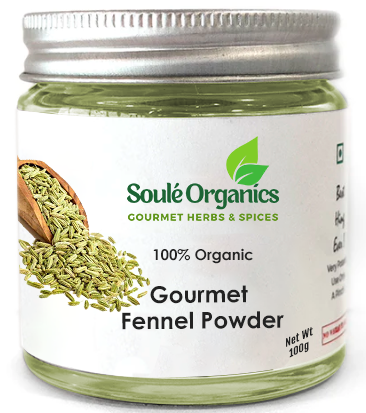FENNEL


What Is Fennel?
Fennel seeds are produced from their fruits which have good aroma, acts as stimulants & are calmative. It has a sweet and aromatic taste, similar to anise and licorice. Mostly cultivated along with other winter crops and harvested in March – April. The few seeds of fennel can be added to tea as a remedy for indigestion. It is a good source of vitamin C. Its property as a digestive is appreciated. Nibbling on few seeds refreshes the breath.
Culinary Use
All parts of the fennel plant—bulb, stalk, and the feathery fronds—are edible, and will add texture and flavor to salads, slaws, pastas, and more. Thinly sliced raw fennel bulb adds a sweet licorice flavor and crunchy texture to salads. To slice the bulb, stand it on the root end and cut vertically with a sharp knife of mandolin. To soften the flavor of the fennel bulb, try braising, sautéing, roasting, or grilling it.
Fennel stalks can take the place of celery in soups and stews, and can be used as a “bed” for roasted chicken and meats. Use fennel fronds as a garnish, or chop them and use as you would other herbs, like dill or parsley. Oh, and one last thing—fennel and seafood go together like peas in a pod.
Health Benefits
- Helps in promoting bone health
- Help lower blood pressure and protect the heart
- Prevent inflammationTrusted and decrease tumor growth rates
- Prevent constipation and promotes regularity for a healthy digestive tract
- Works as an antioxidant to help prevent damage caused by the sun, pollution, and smoke
Nutritional Value
A teaspoon of Fennel Powder weighing 6 g contains:
- Calories: 19.8
- Total Fat: 0.6g
- Carbohydrates: 3g
- Protein: 0.9g
Forms Available
- Seed
- Whole
- Powder
.
.

